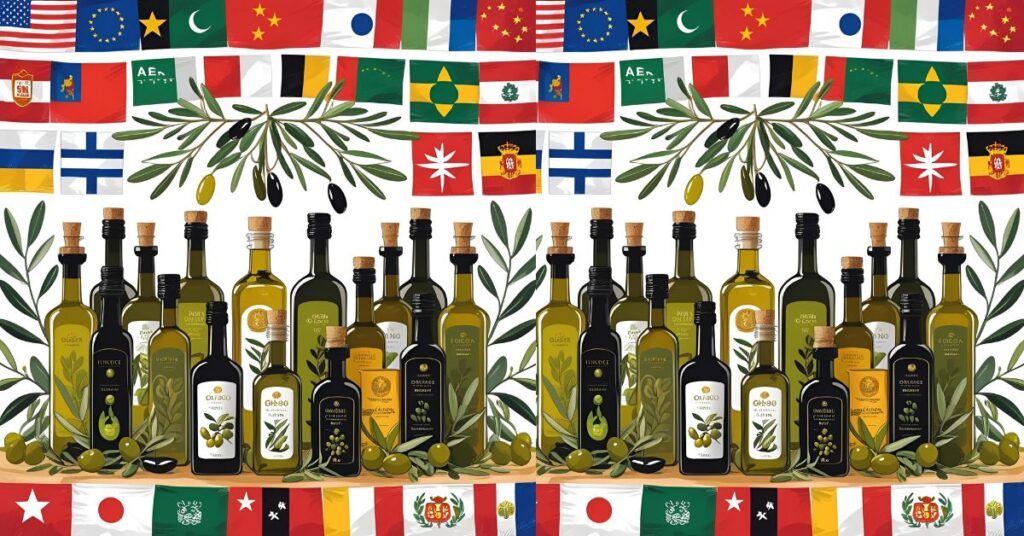
Olive Oil Traditions Around the World: Italy, Greece, Spain & Beyond

Olive oil isn’t just an ingredient—it’s a cultural cornerstone. Across the Mediterranean and beyond, olive oil represents health, heritage, and hospitality. Let’s take a journey through the olio d'oliva traditions of Italy, Greece, Spain, and a few other corners of the world where this liquid gold is more than just food—it’s a way of life.
🇮🇹 Italy: Artisanship in Every Drop
In Italy, olive oil is as essential as pasta. Each region, from Toscana to Puglia to Sicily, boasts its own distinctive oil, shaped by microclimates, soil, and centuries of tradition.
- Tuscan Olive Oil is often peppery and robust—perfect for drizzling over bruschetta or grilled meats.
- Puglian Oil, from the heel of the boot, is smooth and fruity, ideal for vegetables and legumes.
- Harvest Traditions: In many villages, the olive harvest (la raccolta) is a family affair, with people handpicking olives in early autumn and rushing them to the local frantoio (mill) the same day to preserve freshness.
Fun Fact: Italy has over 500 different olive cultivars—more than any other country.
🇬🇷 Greece: The Sacred Oil
Greece consumes more olive oil per capita than any country in the world—and for good reason. Olive oil has deep roots in Greek history, mythology, and religion.
- Koroneiki Olives, commonly used in Greek oil, produce a smooth, herbaceous oil with a mild peppery finish.
- Tradition: Ancient Greeks used olive oil in everything from skincare to rituals. Today, it remains a staple in everyday cooking—from horiatiki (Greek salad) to slow-cooked lamb.
- Olive Trees as Heritage: Some olive trees in Crete are over 2,000 years old and still bear fruit.
In Greek Orthodox tradition, olive oil is used during baptism, symbolizing purity and protection.
🇪🇸 Spain: The Global Leader
Spain is the largest producer of olive oil in the world, responsible for nearly 45% of global production. But volume doesn’t mean compromise—Spanish oils are celebrated for their complexity and flavor diversity.
- Andalusia, particularly Jaén, is the heart of production. You’ll find vast olive groves as far as the eye can see.
- Arbequina, Picual, and Hojiblanca are popular Spanish olive varieties, each offering unique flavor profiles.
- Culinary Use: Spaniards use olive oil for everything—frying churros, dressing tapas, and even baking.
Spain is also innovating in sustainability, with many modern mills powered by solar energy and committed to zero waste.
Beyond the Mediterranean: Expanding the Roots
Though traditionally Mediterranean, olive oil culture is now thriving in other parts of the world:
🇲🇦 Morocco
Morocco has a rich olive-growing tradition, producing earthy, aromatic oils that are used in both cooking and skincare. Olive oil plays a key role in dishes like tagine E harira.
🇺🇸 California
California’s olive oil industry has exploded in recent years. Small-scale producers focus on quality, freshness, and transparency. The state is now home to award-winning oils made from Tuscan and Spanish varietals.
🇹🇷 Turkey
With a tradition dating back to ancient Anatolia, Turkish olive oil is deeply tied to local cuisine and culture. Extra virgin oil is used generously in meze dishes and olive-oil-based stews called zeytinyağlılar.
Why These Traditions Matter Today
Understanding where olive oil comes from—and the traditions behind it—adds depth to every dish we cook. It connects us to generations of farmers, families, and communities who have cherished this ingredient for thousands of years.
Next time you drizzle olive oil over your salad or dip fresh bread into it, take a moment to taste the culture, history, and care in every golden drop.